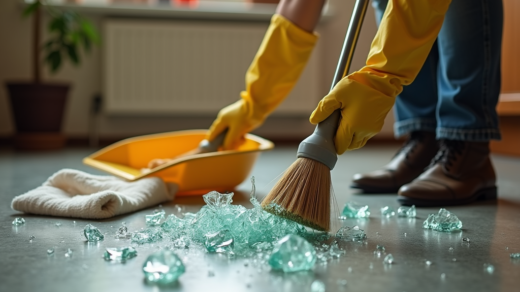Living in a noisy environment can be quite disruptive, making relaxation and concentration difficult within your own home. Fortunately, learning how to make your house more soundproof is a practical project that can significantly enhance your quality of life. This article will cover the strategies and techniques you can employ to minimize the impact of unwanted sounds, ranging from simple adjustments to more advanced solutions. Whether you’re hoping to block out the din of traffic, muffle the hum of appliances, or create a serene working environment, understanding and applying soundproofing principles can make all the difference.
Understanding the Basics of Soundproofing
What Is Soundproofing?
Soundproofing your house involves the process of minimizing the travel of sound between spaces, which can be achieved through various techniques that absorb, dampen, or block noise. The key to effective soundproofing is to address all potential paths through which sound can travel, which includes not just air, but also the structural components of your home.
How Sound Travels in a Home
In a typical house, sound waves travel through both the air and the building materials. Noise can infiltrate your living space via gaps and cracks, ductwork, windows, and even through walls and floors themselves. Understanding the channels through which noise travels will help you form a soundproofing strategy that is comprehensive and effective.

Preparing for Soundproofing
Identifying the Sources of Noise
Before you can dive into how to soundproof a house, it’s crucial to identify the sources of noise. This list might include outside traffic or construction, neighbors’ activities, home appliances, HVAC systems, and even plumbing. Enumerating the sources of noise in your home is the first step to combat interior sound pollution. This inventory will guide you in prioritizing which areas and elements need attention first.
Evaluating the Areas That Need Soundproofing
Once you’ve pinpointed the origins of noise, it’s time to evaluate the areas of your home that require soundproofing. Assessing which rooms need a quieter environment will help you determine the best approach to soundproofing your house. It could be that your living spaces, bedrooms, or home office need immediate attention. Critically analyzing each space for potential weak points like unsealed windows, thin walls, and even electrical outlets can pinpoint where noise-prevention measures will be most effective.
Simple Soundproofing Techniques
Rearranging Furniture and Decor
A part of figuring out how to make your house more soundproof can begin with the simple act of rearranging furniture. Placing bookshelves against shared or exterior walls or setting up large canvas paintings can serve as a first line of defense against noise. These items can absorb sound waves and reduce the level of noise filtering into a room.
Utilizing Soft Furnishings
Using soft furnishings is an easy strategy for soundproofing your house. Incorporating items like thick rugs or carpets can prove particularly effective in absorbing footstep noise, especially on hardwood or tile flooring. Likewise, hanging heavy curtains on windows can be a quick fix to trap sounds from outside.
These adjustments not only enhance the acoustic properties of your home but can also add to its aesthetic appeal, making the endeavor of how to soundproof your house both functional and stylish.
Advanced Soundproofing Strategies
Installing Acoustic Panels
For those wondering how to soundproof a house more extensively, installing acoustic panels is a solid option. Acoustic panels are designed to absorb sound and can be particularly useful for walls that face noisy streets or common areas. They come in various materials and styles, which means you can find something that complements your interior decor while addressing sound issues.
Upgrading Windows and Doors
Windows and doors are often overlooked in discussions of how to soundproof your house but can be significant culprits in allowing noise to penetrate your space. Upgrading to double-pane windows and solid doors, or even adding weatherstripping can create a better sound barrier and make a noticeable difference in the acoustics of your home.

Enhancing Wall and Ceiling Insulation
Soundproofing a room often involves looking beyond the surface. Here is a comparison table of insulation materials that can significantly reduce noise levels:
| Insulation Material | Sound Absorption | Longevity | Cost |
|---|---|---|---|
| Fiberglass | High | Long-term | $$$ |
| Rockwool | Very High | Long-term | $$$$ |
| Foam Insulation | Medium | Moderate | $$ |
| Cellulose | High | Short-term | $$ |
Enhancing the insulation in your walls and ceilings can not only quiet your home but also improve energy efficiency.
Technological Solutions for Soundproofing
The Role of White Noise Machines
White noise machines can be an excellent addition to your soundproofing arsenal. These devices produce consistent and soothing sounds that mask disruptive noises. For those who are particularly sensitive to noise while sleeping or working, white noise machines can provide a peaceful acoustic backdrop, transforming your auditory environment into one that promotes focus and rest.
Acoustic Sealants and Soundproofing Paint
In addition to physical barriers, there are also chemical solutions that play a role in soundproofing your house. Acoustic sealants are specialized compounds designed to fill gaps and cracks through which sound can travel. On the other hand, soundproofing paint is a newer innovation— a thick, heavy-bodied paint that can dampen vibrations and reduce the transmission of sound to some degree. While these options are no substitute for more robust soundproofing measures, they can be beneficial as part of a larger strategy.
Maintaining a Soundproof Environment
Regular Maintenance Tips
- Inspect and repair any seals or weatherstripping that may have worn down over time, as even minor gaps can significantly impact noise levels.
- Regularly check the condition of your soundproofing materials and make replacements or enhancements as needed.
By integrating these maintenance routines, you can retain the effectiveness of your soundproofing measures long-term.
Making Lifestyle Changes
In addition to structural changes, adopting particular lifestyle habits can contribute to reducing noise levels in your home. For example, setting designated quiet hours, using headphones for entertainment rather than speakers, and placing rugs in high-traffic areas can all contribute to a more consistent soundproof environment.

Conclusion
Soundproofing your home from inside noise is a multifaceted process that can dramatically improve your comfort and quality of life. By combining simple techniques with more advanced strategies and making use of technological solutions, you can create a sanctuary that shields you from the cacophony of the outside world. Remember that maintaining a soundproof environment also requires regular upkeep and an awareness of how daily activities impact noise levels. With the right approach, you can enjoy tranquility and peace within your four walls.
FAQs
- What is the quickest way to reduce noise in a room?
The quickest way to reduce noise is to use soft furnishings and rearrange furniture to create barriers. Hanging heavy curtains and laying thick rugs can make an immediate difference. - Are soundproofing measures very expensive?
The cost varies greatly depending on the methods used. Simple options like rearranging furniture and using soft furnishings are cost-effective, while acoustic panels and double-pane windows require a larger investment. - Can soundproofing improve the value of my home?
Yes, soundproofing can be an appealing feature, particularly in noisy neighborhoods, potentially raising the value and desirability of your property. - How effective are white noise machines for soundproofing?
White noise machines don’t block noise but effectively mask it, creating a more favorable sound environment, particularly useful in sleeping areas or home offices. - Can I soundproof my home myself or do I need a professional?
Many soundproofing tasks can be DIY projects, like using sealants or installing simple acoustic solutions. However, for more extensive jobs like installing new windows, it’s advisable to hire a professional.


